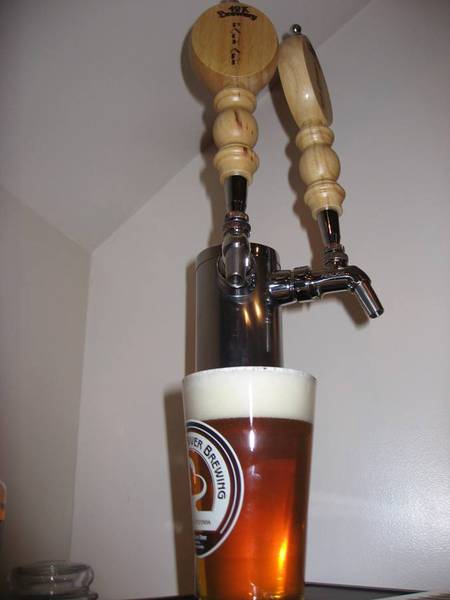Aubie Stout
Well-Known Member
Transferred to secondary this week. Tastes fantastic! I used the wlp051 and I really like the results. Finally found a yeast I like.

Im not one to pat myself on the back but this is one spot-on clone of Konas Fire Rock Pale Ale.
As APAs go, its still malty enough to really stand out as a very flavorful beer without overdoing the bitterness. I substituted Centennial for the Galena and dry hopped this batch with 1/2 Oz of Centennial for 7 days. That really gave it a nice Whoosh I was looking for.
This is maltier and more robust in flavor than SNPA in my opinion. If you love the hop flavor / aroma without the high bitterness, this is perfect.
Anyway, whether you like or dont like Kona Pale Ale, this clone will get you dangerously close.
Recipe Specifications
--------------------------
Batch Size: 11.00 gal
Boil Size: 14.40 gal
Estimated OG: 1.053 SG
Estimated Color: 6.7 SRM
View attachment 4170
Estimated IBU: 35.2 IBU
Brewhouse Efficiency: 72.0 %
Boil Time: 90 Minutes
Ingredients:
------------
Amount
18.00 lb Pale Malt, Maris Otter (3.0 SRM)
2.00 lb Munich Malt (9.0 SRM)
1.00 lb Honey Malt (25.0 SRM)
0.50 lb Cara-Pils/Dextrine (2.0 SRM)
1.00 oz Centennial [9.50%] (60 min)
0.50 oz Cascade [7.80%] (40 min)
0.50 oz Cascade [7.80%] (30 min)
0.50 oz Cascade [7.80%] (20 min)
0.50 oz Cascade [7.80%] (10 min)
0.50 oz Mt Hood [3.70%] (5 min)
1 Pkgs German Ale/Kolsch (White Labs #WLP029) Yeast-Ale
Dry hop with ½ Oz of Centennial per 5-gallons for 5-7 days.
Mashed at 154.
Primary for two weeks then straight to keg.
Cold conditioned keg (in garage) for 10 days, then to gas
Crystal clear right out of the tap.
View attachment 4171


Best beer I've made to date. ...

Quick question on the extract version. Would you still dryhop with centennial. I notice it's in the AG but not listed under the extract. I transferred to secondary last night and it is already excellent. I don't want to mess it up. Thank you very much for posting the recipe.
Fuggles would work well, but I am a fan of the Hallertau. :rockin:Never actually had one, but it looks great. I'm gonna brew tomorrow, with a few sub's:
S-04 for the yeast
I don't have any Mt Hood, so I was thinking about Saaz or Hallertauer. Not identical, just looking for something grassy, and as BM said "some complexity away from the american citrus hops"
Edit: What about fuggles in place of the mt hood?
Finished at 1.060 with 85% eff... normally I run about 75%. I started a new fly sparging method that REALLY seems to be working.
What change did you make that took you from 75% to 85%? I'm continuously hitting 73-75% fly sparging, wouldn't mind a boost if it was as consistent.
2) I slowed my sparge way down. 4.5 minutes per gallon.
Huh??????????
Enter your email address to join: